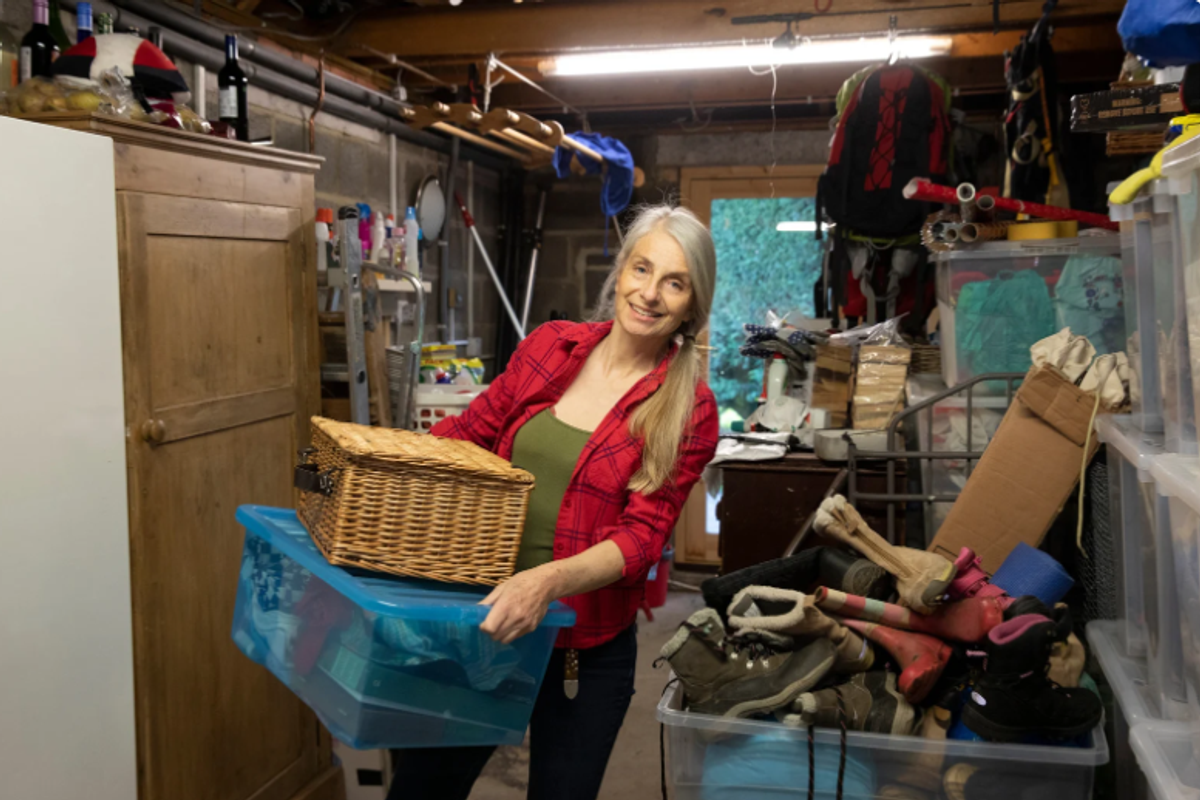Lately it can feel like we've somehow accidentally opened a portal to the heart of the sun.

Unfortunately, heat waves are getting stronger and more common today, thanks to climate change. According to this article by The Guardian, a third of the world is at risk of dangerous heat waves today. While heat waves are hitting us more frequently now than in the past, 100 years ago people still had to deal with the occasional temperature spike. How did they do it?
The pictures from then show how people coped in ways as surprising as they are relatable.
Here are 20 examples of what I mean:
1. Need ice? That's going to require a little more muscle power than just walking over to your freezer.
Not going to lie, that looks incredibly refreshing. Photo from 1932. Photo from Francis M.R.Hudson/Topical Press Agency/Getty Images.
2. Back then, ice didn't come in plastic bags from a freezer outside 7-Eleven. You had to get it delivered.
August 1911. Photo from Topical Press Agency/Getty Images.
This photo's from 1911, just a couple years before the first electrically-powered home refrigerators hit the scene. Before then, the ice box was literally that — a box kept cool by giant chunks of ice.
3. Of course, once you carry that load of ice in, you have to have a little sit. Sometimes on it. With an ice cream.
Damp shorts are a small price to pay for the most refreshing chair ever. Photo from Fox Photos/Getty Images.
4. At some point, you decide your fashion sense is less important than keeping cool.
It's hard to keep a stiff upper lip when you have the funnies sitting on your head. July 1913. Photo from Topical Press Agency/Getty Images.
5. Wet pants are a small price to pay for a chance to go wading.
A group of girls goes wading into the Serpentine in London's Hyde Park. August 1911. Photo from Topical Press Agency/Getty Images.
6. And everybody's gonna need a hat.
These men are so happy about their hats, it's almost inappropriate. Circa 1928. Photo from Topical Press Agency/Getty Images.
7. Edwardian gentlemen know to act normally even if one is sweltering in a suit and bow tie. For comfort, one may remove one's jacket only.
Aww, yeah. May 1914. Photo from Topical Press Agency/Getty Images.
8. If you've ever lived anywhere super dry, you know all about spraying the driveway to keep the dust down.
1925. Photo from Topical Press Agency/Getty Images.
9. Or taking an extra bath to cool off before bed.
August 1919. Photo from Topical Press Agency/Getty Images
10. Summer is the perfect time to take a day off and hit the beach with your friends.
May 1925. Photo from Topical Press Agency/Getty Images.
11. And everyone else's friends too, apparently.
A beach in Bognor Regis in 1933. Photo from Topical Press Agency/Getty Images.
12. At some point, it's hot enough to ignore the signs and just jump in a public fountain.
1912. Photo from Topical Press Agency/Getty Images
13. And live your whole life in the water.
Circa 1930. Photo from Hulton Archive/Getty Images
14. Literally — your whole life.
Can't imagine doing that with a Macbook. Circa 1937. Photo from Topical Press Agency/Getty Images.
15. Summer is the time when swimwear becomes daywear then eveningwear.
1929. Photo from Fox Photos/Getty Images.
16. No matter what you're wearing, lounge around in general. It's too damn hot to do anything else.
That is the slump of man who's decided that it's too hot to care anymore. Paris, 1929. Photo from Hulton Archive/Getty Images.
17. Get some sun.
1933. Photo from Topical Press Agency/Getty Images.
18. Of course, in a heat wave, you've got to make sure to watch our for your animal friends too.
May 1936. Photo from E. Dean/Topical Press Agency/Getty Images.
19. Especially if that means letting them join for a dip.
Horses in the Thames. 1935. Photo from David Savill/Topical Press Agency/Getty Images.
20. Or making sure they've got the right accessories.
1928. Photo from Fox Photos/Getty Images.
As the Earth gets warmer, heat waves are likely to increase in both frequency and strength, so take a page from these summer-sun veterans and play it safe.
Drink plenty of water. Keep an eye out for signs of heat exhaustion and heat stroke. Try to do outside chores in the morning or evening, when it tends to be less hot, if you can.
And keep an eye out for tricky reporters and cameras because, who knows, in 100 years, you might end up on a list just like this one.




 Simpsons Gif
Simpsons Gif  Aging happens in bursts, scientists find.
Aging happens in bursts, scientists find. Research shows the body goes through specific changes in our 40s and 60s.
Research shows the body goes through specific changes in our 40s and 60s.
 Representative Image: A father daughter moment.
Representative Image: A father daughter moment.  Readers were in their feels about the video.
Readers were in their feels about the video. 

